- Home
- Ian Buruma
Inventing Japan: 1853-1964 (Modern Library Chronicles) Page 9
Inventing Japan: 1853-1964 (Modern Library Chronicles) Read online
Page 9
The armed forces were divided, however, like every Japanese institution. The two warring factions at the time of the Minobe affair were the Imperial Way faction, Kodoha, and the Control faction, Toseiha. The latter, which included Ishiwara Kanji, the Manchurian plotter, and General Tojo Hideki, saw the future in terms of total war with the West. Staging violent rebellions in Japan against capitalists and bureaucrats was not their style. They believed in military discipline and building national strength in cooperation with the bureaucracy and big business. The Imperial Way men wanted a revolution, a Showa Restoration, which would rid the nation of corrupt capitalists and other enemies of the kokutai and create a military dictatorship under a new constitution. The guardians of Japan’s precarious imperial system had always feared revolts from the Left. The real threat, however, came from the Right.
In 1935, in the midst of the Minobe affair, military squabbling for government positions turned violent. A top military bureaucrat in the Control faction was about to remove some troublesome Imperial Way officers from their posts. For this he was slashed to death in his office by a young officer wielding a samurai sword. As usual in Japan, the young officer’s sincerity was widely admired and much praised in the popular press. To cool things down, some of his most enthusiastic supporters were sent off to Manchukuo, and the Control faction reasserted its authority. Apart from the weather, however, nothing became remotely cooler.
February 26, 1936, saw the heaviest snowfall in thirty years. It was then, in the early morning, that junior Imperial Way officers decided to strike. They were a mixed bunch, including the son of a famous Tokyo comedian. Many of them were from the rural northeast, where the slump had caused the cruelest hardships. Poverty was forcing farming families to sell their young women to pimps who roamed the countryside to supply city brothels. The army, brutal as it was, offered farm boys their only refuge. The brighter ones, fired up by the likes of Kita Ikki, drifted into a kind of imperialist fundamentalism, obsessed with purity and religious worship of the nation.
Over a thousand men tried to take over central Tokyo. The finance minister was assassinated in his bedroom, as were the lord privy seal and the inspector general of military education, a Control faction man. Prime Minister Okada escaped with his life only because the rebels killed his brother-in-law instead by mistake. Tokyo citizens were handed pamphlets filled with emotional rhetoric about the sincere feelings of the rebels.
Some of them may have been impressed, but not Emperor Hirohito. He quite rightly saw the attempted coup as a direct attack on the establishment around him. Allowing young Turks a free hand in Manchuria was one thing, but this kind of insubordination at home had to be stopped. The navy was called in to restore order. The rebels were unable, but only just, to storm the palace to make their sincere feelings known to the emperor directly and take out his “evil advisers.” On February 29, the whole thing was over, the rebels surrendered, discipline was imposed, and the Control faction was now firmly in control of the government.
Japan had been saved from violent revolution, but the Control faction dealt a further blow against what was still left of civilian influence in government. The military demanded that new cabinet appointments be approved by the army and navy ministers. Since they had to be serving officers, the armed forces could now make or break any government. Hirota Koki, a relatively moderate diplomat, became the new prime minister. But he had to do the army’s bidding. So he raised the military budget and signed an anticommunist alliance with Nazi Germany. The other main news to divert Japanese from military affairs in that year was the strange affair of Abe Sada, a small-time geisha, who strangled her lover in a fit of sexual passion and was found wandering around Tokyo carrying his genitals in her handbag.
In China, the troops were getting restless again. Hirota could not handle them, nor could two of his short-lived successors. The conservatives around the throne, who were not yet ready to contemplate an all-out war in China, looked to one of their own to ensure some kind of stability. Prince Konoe Fumimaro had grown up with Hirohito and was his regular golf partner. A cultivated, rather haughty aristocrat, Konoe had traveled widely, was well connected in the armed forces, and had right-wing intellectual friends, yet he was not a natural warmonger. He was, however, ferociously anticommunist and infected by the more extreme racial prejudices of his time. Like Ishiwara Kanji, the Manchurian plotter, he saw the world in terms of racial conflict between East and West. Any form of liberalism was a horror to him. What he had in mind was a united, totalitarian Japanese state, in which domestic conflicts were abolished. One of the permanent features of east Asian politics is the combination of murderous factionalism and highfalutin rhetoric of absolute unity. It is the vicious circle of all authoritarianism: One always goes with the other.
Prince Konoe, despite his military connections, was no more able to restrain the troops in China than his predecessors. The war with China was never actually declared. It began with the “China incident” on July 7, 1937, when a Japanese private relieved himself in the shadows of the Marco Polo Bridge near Peking and then went off for a walk in a so-called demilitarized zone. The soldier was not away for very long, but since he was presumed to be missing, his commander insisted on combing the area. The Chinese proposed a joint search. The Japanese commander took this as an insult. Violence broke out and spread quickly to other parts of northern China.
Konoe appears to have been of two minds. He wanted to teach the Chinese a lesson and “make them reflect,” as they say in east Asia, but a full-scale war seems not to have been his intention. He wrote in his diary: “I have made the decision to control the military by abandoning my neutral position and get public opinion behind me.” Since the political parties were no longer able to do anything to affect military behavior, Konoe came up with the particularly bad idea of replacing the remaining parties with one quasi-fascist party, the so-called Imperial Rule Assistance Association (IRAA), as a way of mobilizing public opinion. Carried out in 1940, this was to be the coup de grâce for the last pathetic vestiges of Taisho democracy. It did nothing to control the armed forces.
Before that unhappy event, however, in the summer of 1937, Japanese troops fought a horrendous battle near Shanghai with Chiang Kai-shek’s best forces. The city was bombed, and 250,000 Chinese, including many civilians, were killed as the battles raged in the outskirts. A plaque placed near the scene of great massacres mentions that “blood flowed together with the rivers and changed the color of the sea.” In November, more Japanese troops landed in the Bay of Hangzhou. A balloon was floated above Shanghai announcing in Chinese that one million Japanese had landed. The bloody march to Chiang Kai-shek’s capital of Nanking had begun.
—
The Nanking massacre of December 1937 was undoubtedly one of the worst atrocities of the Japanese war. However, comparing it to the Nazi Holocaust, as some do, is not very helpful in understanding the particular nature of this war crime. It was an orgy of violence more than a planned extermination campaign. Behaving like medieval conquerors, drunken Japanese soldiers roamed the streets with cartloads of loot. Thousands of women of all ages were gang-raped before being killed or mutilated. Entire neighborhoods were put to the torch. Chinese men and boys, tethered like cattle, were machine-gunned into ditches or the Yangtze River, whose banks were clogged with bloated corpses. Civilians were often murdered for the sheer fun of it, used for bayonet practice and other grisly games. And this went on for six weeks. Embarrassed Japanese diplomats sent foreign eyewitness reports to Tokyo, hoping that something would be done to stop it. Nothing was. Right next to the embassy was a girls’ school. The diplomats would have been able to hear the screams of students being raped and tortured.
We shall never know exactly how many Chinese died in the massacre. Estimates—often depending on political points of view—range from thousands, to tens of thousands, to more than 300,000. The Tokyo War Crimes Tribunal put the figure at 250,000. But the exact number should not be the main issue. What need
s to be explained is the peculiar ferocity of this assault on a defenseless population. If the point was not to exterminate every last Chinese, what then was the reason for this extraordinary frenzy of rape, murder, and pillage? What caused the complete breakdown of discipline in an army that in earlier wars had been known for its orderly behavior? Many answers have been put forward: the pathology of Japanese culture, the Way of the Samurai, and all that; a deliberately planned act of terror, ordered from Tokyo, to force Chiang Kai-shek’s government into submission; a massive letting off of steam by brutalized, battle-weary troops.
That the massacre was ordered by the government in Tokyo seems unlikely. The emperor and his advisers were still conscious of international opinion. Japan desperately needed a constant supply of raw materials and industrial exports from Britain and the United States. Washington’s policy was to remain neutral, yet public sympathy was on the side of China. This was why Japan had not declared war on China; policing an “incident” seemed less likely to give offense. And America, under its so-called neutrality laws, would have been forced to cease trading with both sides in the event of a declaration of war, cutting off war-related imports neither Japan nor China felt they could easily afford to lose. Upsetting the American public with atrocity stories was, in any case, not in Japan’s best interests. And the Japanese generals quickly realized that mass rapes hardened Chinese resistance. To counter that trend, the Japanese War Ministry decided to recruit or, more usually, kidnap Koreans, Chinese, Southeast Asians, and even some Europeans to serve in a vast network of army brothels, or “comfort stations.”
Mass murder did follow another Japanese policy, however, which was to take no prisoners. From the moment they landed, Japanese troops were told by their officers to “clear up” captured soldiers as they fought their way up to Nanking. Since there was a lot of guerrilla warfare, the Japanese usually made no distinctions between soldiers and civilians. Brutalized already by ill treatment from their own superior officers, Japanese soldiers were coarsened further by fighting savage battles in a foreign country. All Chinese were enemies in their eyes, including women and children. Rather than feed them, it was simpler just to kill them.
The siege of Nanking had been a particularly brutal affair. Many Japanese lives were lost before Chiang Kai-shek decided to abandon his capital, in a helter-skelter river crossing with much of his army and thousands of mostly privileged citizens in tow. The roughly half a million people left in Nanking included many refugees from the countryside and soldiers in civilian clothes. When Japanese troops, literally drunk with victory, were told to mop up, they had little idea how to distinguish citizens from ex-soldiers. Having callused hands was usually sufficient justification for execution.
Yet this alone does not explain the bestiality of what happened in Nanking. What the Japanese did to the Chinese is more akin to what Hindus and Muslims did to each other in 1947, or what Serbs did to Bosnian Muslims in the 1990s, or indeed what Nazis did to Jews. It was not enough to kill; the victims had to be humiliated and dehumanized first. This makes the killing easier, for it strips the victims of their humanity. But it is also the result of vicious indoctrination. For years, Japanese had been told the Chinese were inferior and the Japanese a divine race. Contempt for the Chinese goes back to those Meiji prints of the Sino-Japanese War, in which the Japanese are tall, white, and vigorous and the Chinese are cowering yellow cretins. Government propaganda, parroted by the jingoistic Japanese press, told soldiers they were fighting a holy war. Anything they did in the name of the emperor, no matter how savage, was sanctioned by the holiness of their cause. An American chaplain in Tokyo’s Sugamo prison, where Japanese war criminals were held after the war, concluded from his many interviews that they “had the belief that any enemy of the emperor could not be right, so the more brutally they treated their prisoners, the more loyal to the emperor they were being.”
Nanking was probably the worst single atrocity, but there would be many more, in China, Manchukuo, the Philippines, Singapore, Malaya, Thailand, Indonesia, and Burma. It was as though the militarist monster, forged in late Meiji from a mixture of late Edo nativism and borrowed German racial theories, had finally burst into horrible life. This was the result of a sequence of human decisions and wrong paths taken that long preceded the reign of Emperor Hirohito. It was also a sign of a hopelessly flawed chain of command, where thugs in the field overruled their superior officers, junior officers in Tokyo intimidated generals, and chiefs of staff bullied civilian bureaucrats and the imperial court.
There was little sign in Tokyo that something ghastly had happened. The emperor commended his generals for a job well done. The one man to show any remorse for Nanking was General Matsui Iwane, who was in charge of the Central China Area Army when the nationalist capital was taken. After Nanking he resigned his position, shaved his head, and went into a Buddhist retreat. During his trial after the war, he called the massacre “a national disgrace,” and yet he was hanged while many of his junior officers who gave the actual orders on the scene went unpunished.
—
Even as the emperor’s troops got bogged down in China, skirmishes on the borders of Manchukuo and the Soviet Union were threatening to get out of control. Officers of the Kwantung army, such as Colonel Tsuji Masanobu, a maniacal soldier responsible for all manner of outrages before the war was over, were itching to attack the Soviet army. Tsuji was a proponent of the Strike North faction, as were most members of the Imperial Way. They wanted to contain the Soviet Union by taking control of eastern Siberia. General Araki Sadao, who was, rather absurdly, Prince Konoe’s education minister, once said that if the Soviets did not cease to annoy Japan, he would “have to purge Siberia as one cleans a room of flies.”
The Strike North faction was largely army based and attracted many junior officers. Those who wished to avoid a war with the Soviet Union and head south instead, where control of the rich natural resources of Southeast Asia would allow the navy to build up strength for an eventual war in the Pacific, were mostly admirals, generals, and high-ranking officers of the Control faction. The emperor had no desire to go to war with the Soviets and was on the whole more sympathetic to the navy. There was, however, no consensus at all about what to do next: cut a deal with Chiang Kai-shek and retreat from China proper; patch things up with the West; prepare for an all-out war with the West; prop up a Chinese puppet regime in Nanking; get even closer to Nazi Germany; strengthen the army, strengthen the navy; strike north, strike south. But as so often happened, Tokyo’s dog was wagged by its military tail, once more in Manchuria.
Fighting broke out in the summer of 1938 on the wet and misty borderlands of Korea, Manchukuo, and the Soviet Union. Soviet troops were building a fortification on the Manchukuo side of the Tumen River, and the Japanese decided to test them. The Soviets had bombers and tanks. The Japanese had none, but they set great store on their superior “spirit.” After battling for a fortnight, there were many dead on both sides, more on the Japanese than the Russian, but nothing much was gained or lost. The emperor told his general staff to stop the war. Colonel Tsuji ordered his men to go on regardless. Spirit would see them through. Less than a year later, at Nomonhan, on the border with Outer Mongolia, the Japanese, armed with Molotov cocktails, sabers, field guns, and some light tanks, attacked General Zhukov’s Soviet tank brigades. The fighting on ghastly, mosquito-infested terrain went on for months and ended in a slaughter. The flatlands were filled with Japanese corpses, feasted on by black desert vultures. More than twenty thousand Japanese died of hunger, thirst, and disease, as well as from Russian bombardments. Colonel Tsuji was duly promoted. But the plan to strike north was abandoned. From then on all the action would be to the south.
5
WAR AGAINST THE WEST
It was a moment of great joy for the emperor and many of his subjects when Japanese torpedo and dive bombers wrecked much of the U.S. fleet at Pearl Harbor on December 7, 1941. Emperor Hirohito was dressed for the occasion in his
navy uniform, and courtiers recorded that His Majesty was in “a splendid mood.” Hayashi Fusao, author of In Affirmation of the Great East Asian War, was traveling in Manchukuo when he heard the news. It was, he wrote, “as if a heavy load had been lifted from my shoulders.” Takamura Kotaro, the poet, sculptor, and Parisian-style bohemian, wept tears of joy. The literary critic Ito Sei “felt as if in one stroke I had become a new man.…” After Pearl Harbor came Singapore, the Dutch East Indies, the Philippines … The holy war (seisen) of Asian liberation could not have got off to a better start.
One Japanese eyewitness, Okuna Takao, a distinguished literary critic, summed it up as follows:
“The attitudes of ordinary people, who had felt ambivalent about the war against China, and even of intellectuals who denounced it as an invasion, were transformed as soon as the war against Britain and the U.S. began.… Everyone worried about what would happen to Japan.… At the same time, there was a sense of euphoria that we’d done it at last; we’d landed a punch on those arrogant great powers Britain and America, on those white fellows. As the news of one victory after another came in, the worries faded, and fear turned to pride and joy.… All the feelings of inferiority of a colored people from a backward country, towards white people from the developed world, disappeared in that one blow.… Never in our history had we Japanese felt such pride in ourselves as a race as we did then.”
This is probably as truthful a description as one is ever likely to get. All those years of being told one was the victim of the arrogant West, all the snubs and slights, real or not, the humiliations of trying to catch up with the material superiority, not to mention the “Civilization and Enlightenment,” of the Occident by acting as the best pupils in the class of Westernization—the shame of all that had been wiped out in one blow by those dive bombers swooping down on Pearl Harbor. Perhaps now the world would take the Japanese as seriously as they took themselves.

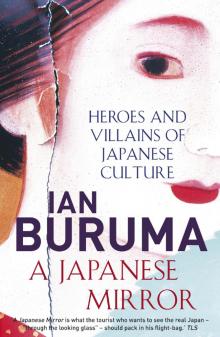 A Japanese Mirror
A Japanese Mirror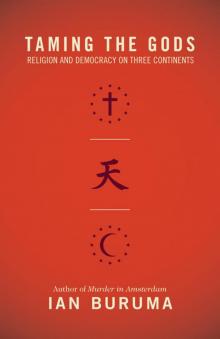 Taming the Gods
Taming the Gods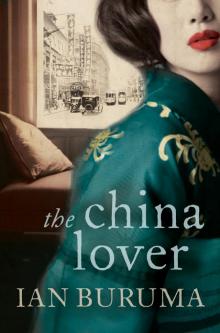 The China Lover
The China Lover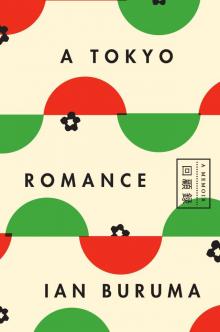 A Tokyo Romance
A Tokyo Romance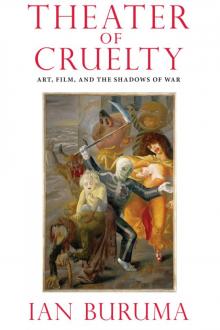 Theater of Cruelty
Theater of Cruelty Year Zero
Year Zero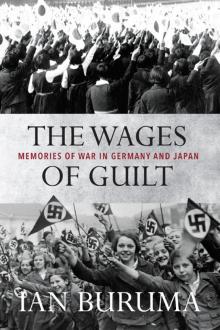 The Wages of Guilt
The Wages of Guilt Murder in Amsterdam
Murder in Amsterdam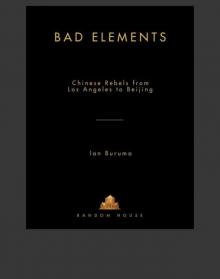 Bad Elements
Bad Elements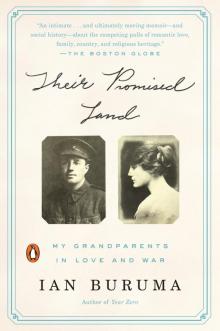 Their Promised Land
Their Promised Land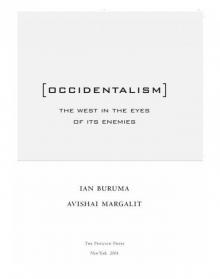 Occidentalism
Occidentalism Anglomania
Anglomania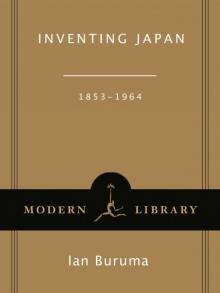 Inventing Japan: 1853-1964 (Modern Library Chronicles)
Inventing Japan: 1853-1964 (Modern Library Chronicles) The Missionary and the Libertine
The Missionary and the Libertine